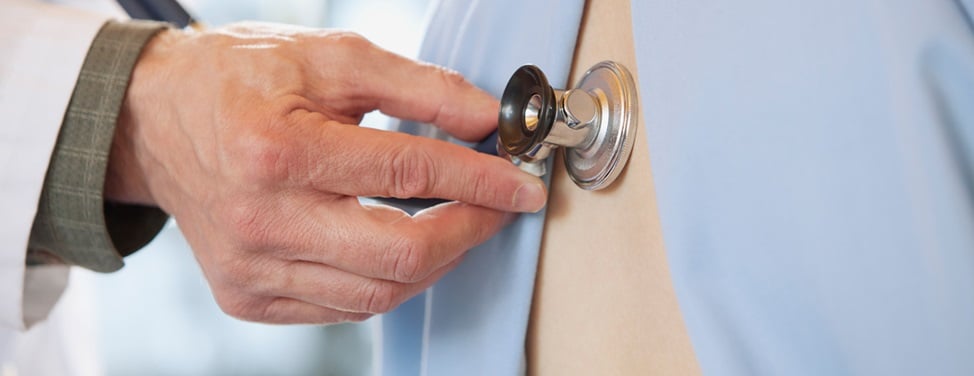
ILD Nutrition Manual: General Guidelines for Eating Healthy
Achieve and maintain a healthy body mass index (BMI). Aim for a BMI of around 20 to 30. Maintaining a healthy weight is important for people with lung disease. Excess weight can increase shortness of breath and puts a strain on your heart, while being underweight can decrease your energy level and make you more susceptible to infection.
Eat a balanced diet with plenty of protein, fresh fruits and vegetables. Protein is the body's building block. You need protein to aid healing and to reduce muscle loss. See our list of high-protein foods and tips for increasing protein in your diet. Carbohydrates should come from fresh fruits and vegetables, rather than processed, high-sugar or starchy foods, which contain more calories and fewer nutrients.
Eat several small meals of high nutritional value. Eating a large meal can leave you feeling too full and can restrict your lungs from fully inflating, making it more difficult to breathe. Eating three smaller meals and three snacks a day makes the stomach less full, leaving more room for your lungs to expand. Make every calorie you eat beneficial to your body.
Eat your main meal early in the day so you'll have more energy throughout the day.
If you wear oxygen, be sure to use it during meals. The body requires lots of oxygen for eating and digestion.
Limit sodium intake. Sodium can cause fluid retention, which may interfere with breathing. You should especially watch your sodium consumption if you're taking prednisone or if you have high blood pressure or heart problems. Try to get no more than 2,400 mg of sodium per day.
Foods especially high in sodium include:
Table salt, the most common source of sodium in our diets. One teaspoon of table salt contains 2,000 mg of sodium.
Processed foods such as:
- Anchovies and sardines
- Chips, crackers, pretzels and nuts
- Frozen dinners
- Ketchup
- Luncheon meats, ham, hot dogs, bacon, sausage and salt pork
- Many breads and bakery goods
- Many canned foods such as soups, vegetables, pork and beans and tomato products
- Many cereals
- Monosodium glutamate (MSG)
- Mustard
- Soy sauce
- Steak sauce
Sodium also occurs naturally in foods. Unsalted, unprocessed foods such as fresh fruits, vegetables, meats and rice often have small amounts of sodium. Most foods in your diet should be unsalted and unprocessed.
Include fiber in your diet. Fiber aids the digestion process and bowel function and should be incorporated into your daily meals. Fiber is found in whole wheat, oat and bran products, fruits and vegetables and beans. The only problem with some high-fiber foods is the excess gas they may produce, which could increase shortness of breath.
Avoid foods that cause gas and bloating. If the foods on this list bother you, eat less of them:
- Apples (raw)
- Asparagus
- Beans (pinto, kidney, black, navy)
- Broccoli
- Brussel sprouts
- Cabbage
- Carbonated drinks
- Cauliflower
- Corn
- Cucumbers
- Melons
- Onions (raw)
- Peas (split, black-eyed)
- Peppers
- Pimentos
- Radishes
- Rutabagas
- Turnips
Limit caffeinated drinks. Caffeine can interfere with some medications and can cause restlessness or nervousness.
Limit alcohol. Alcohol interferes with a good night's rest.
If you have acid reflux, limit foods that increase acidity in the stomach. Spicy foods, caffeine and alcohol can increase stomach acidity and should be limited if you have acid reflux. Avoid lying down for two hours after eating.
Next:
ILD Nutrition Manual Index:
- ILD Nutrition Manual: General Guidelines for Eating Healthy
- ILD Nutrition Manual: Body Mass Index
- ILD Nutrition Manual: Increasing Protein in Your Diet
- ILD Nutrition Manual: Tips for Gaining Weight
- ILD Nutrition Manual: High-Calorie, High-Protein Sample Menu
- ILD Nutrition Manual: High-Calorie Shakes and Smoothies
- ILD Nutrition Manual: Tips for Losing Weight
- ILD Nutrition Manual: Plate Method for Healthy Meal Planning
- ILD Nutrition Manual: Prednisone and Weight Gain
UCSF Health medical specialists have reviewed this information. It is for educational purposes only and is not intended to replace the advice of your doctor or other health care provider. We encourage you to discuss any questions or concerns you may have with your provider.














